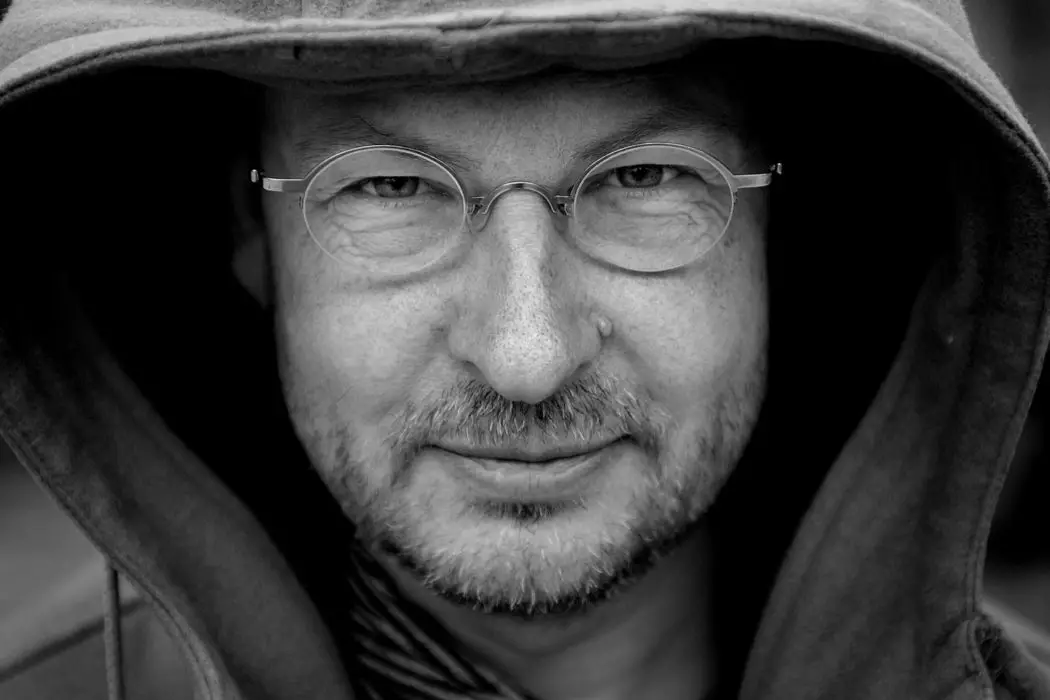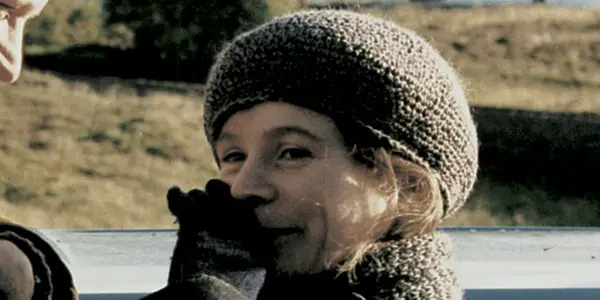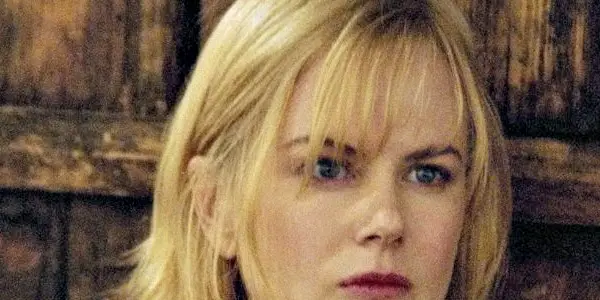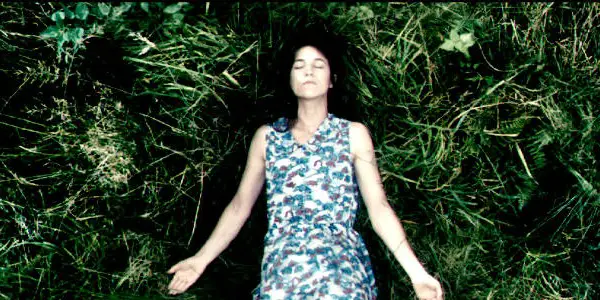The Beginner’s Guide: Lars Von Trier, Writer/Director

I can quote Parks and Recreation endlessly, I love decaf…
Danish director Lars Von Trier is probably one of the most depressing directors working today. But I don’t mean that in a bad way. He makes amazing works of art, but they can be very emotionally taxing. But he has been able to take his own cynical approach and apply them to various genres ranging from musicals to horror to romance, painting an eclectic color palette that spans across his entire career or at least his entire English language film career.
Breaking The Waves (1996)

The English language debut of Lars Von Trier, Breaking The Waves is set in the Scottish Highlands in the ’70s, and centers around a religious woman named Bess McNeill (Emily Watson), who frequently attends church and has conversations with God with her own voice as if He is responding to her. But when she marries an atheist oil rig worker named Jan (Stellan Skarsgard), she begins to challenge the Calvinist community she lives in and forces her sister Dodo (Katrin Cartlidge) to create suspicion over him.
As Jan heads away to work on an oil platform, Bess grows more and more impatient, praying for his return. He then gets involved in an accident that paralyzes him and Bess grows remorseful, feeling that her prayer is the reason for his injury. No longer able to perform sexually, Jan persuades Bess to find another man to have sex with, convincing her that it will heal him and lift his spirits. Bess is initially reluctant but she goes ahead with it anyhow, believing she is doing God’s work.
Breaking The Waves is Trier’s version of a romance, one that demonstrates the great lengths that people will go for the ones they love. While what Bess does here for her husband may seem exaggerated, it does allow the film to weave in the question of religion, because when watching it you can figure out for yourself if Bess is fulfilling God’s wishes or if Bess’ selfish prayer caused Jan to be immobile.
The film also works thanks to the leading performance from Emily Watson, who not only made her feature film debut here and was a last minute replacement for Helena Bonham Carter, but she garnered her first Oscar nomination for Best Actress.
Dancer In The Dark (2000)

In spite of Dancer In The Dark being a musical, make no mistake. This is no La La Land. The story follows a Czech immigrant named Selma (Bjork in her feature film debut), who attempts to build a better life for herself in America for herself and her son. She suffers from a degenerative eye condition that is causing her to lose her vision, and she tries to save up to pay for an operation that will prevent her son from suffering the same fate. She works at a mundane job at the local factory but what ultimately gets her through the day is her love of musicals, as she would start daydreaming that her life is a happy musical for a short while before drifting back to reality.
But things turn complicated once she finds a confidante in Bill (David Morse), the local sheriff and the owners of a trailer that Selma and her son live in. He harbors a terrible secret, and once she reveals her own secret to him involving her blindness, Selma finds herself in a race against time to not only save her son but her life as well.
Similarly to Breaking The Waves, Dancer In The Dark demonstrates the power of a woman’s perseverance to fight for someone that she loves. In fact, both films are a part of Lars Von Trier‘s “Golden Hearts” trilogy, which also features the more obscure Danish film The Idiots (1998), the second film in the trilogy.
But unlike Waves, Dancer is more depressing because of how it prolongs the agony of our main character and how Selma occasionally drifts away into a happy Hollywood musical, with everyone happily singing and dancing, that will never be her reality. Lars Von Trier, along with his cinematographer Robby Muller, helps capture the distinction between fable and reality by shooting the musical numbers with bright lighting to contrast the grimness of Selma’s mundane life, which looks more bleak and colorless. Just like life itself.
Dogville (2004)

The only film in Trier’s filmography to tackle American culture, Dogville is set in a small town in the Rocky Mountains, where a mysterious woman named Grace Mulligan (Nicole Kidman) arrives while on the run from gangsters. The townspeople allow Grace to stay, under the condition that she takes part in physical labor. Over the course of her stay, Grace slowly realizes that the wholesome townsfolk are not as wholesome as they appear.
Interestingly, Lars Von Trier takes a very minimalist approach to the film’s setting, filming it on a soundstage with only a handful of props and set pieces present. But this allows the story to be more universal. It may be a portrait of the ugly side of small-town America, but the town of Dogville could still be anywhere. It could be a town in Canada or Romania; any place.
While the minimalist set pieces might turn some viewers off because of how it always feels stagey, it does create a distinctive film-watching experience regardless. It is also made worth watching thanks to its lead performance by Nicole Kidman, who carries both a holistic and enigmatic approach to her portrayal of the mysterious Grace.
It also spawned a sequel released in 2005 titled Manderlay, which starred Bryce Dallas Howard as Grace instead of Nicole Kidman, but it didn’t catch the same kind of attention that Dogville did.
Antichrist (2009)

Antichrist is Lars Von Trier’s venture into the horror genre that pulls no punches. Once the film opens with a child falling to his death while his parents engage in intercourse, it immediately lets the audience know how dark it can or will go.
The story revolves around an unnamed couple played by Charlotte Gainsbourg and Willem Dafoe dealing with the death of their child. The wife is ridden with guilt, to the point where she feels guilt over being a woman in general. Her therapist husband decides to help her overcome her grief by bringing her to an isolated cabin named “Eden.” But both physical and human nature begin to take a toll on them as the wife develops increasingly violent sexual behavior.
Melancholia (2011)

A zombie apocalypse. An alien invasion. A meteor shower heading towards Earth.
When we think about films dealing with the end of the world, we think of ones with concepts like the ones above. But we rarely ever see a sci-fi film as intimate as Melancholia which is, ironically, a beautiful film about the end of the world.
Melancholia deals with two sisters named Justine and Claire (Kirsten Dunst and Charlotte Gainsbourg), who become at odds with one another over the course of Justine’s crumbling wedding celebration. But as their duality takes place, a mysterious planet slowly collides into Earth, putting it to an end.
The planets, Earth and the rogue planet, are able to serve as a symbol for both sisters. Claire is like Earth because of her, well…earthly nature while Justine is the rogue planet with her sense of doom and her depression. The science fiction elements will likely please genre fans but for the most part, it is a family drama under the guise of an apocalyptic sci-fi film. It is also based on Lars Von Trier‘s own experiences with depression, with Justine acting as a stand in for Trier.
As somebody who has had bouts of depression, I can say that Melancholia is a very realistic portrait, capturing how those that feel depressed force a smile for those around them to conceal their pain, and tend to have feelings of self-loathing. It is a gut-wrenching portrayal of mental illness set against the backdrop of a science fiction story-line.
The Future
After coming out with both volumes of the sex odyssey Nymphomaniac, which fell under the radar compared to his other work, Lars Von Trier has just wrapped production on The House That Jack Built, which follows the 12 year story of a man named Jack, played by Matt Dillon, and his development as a serial killer. Uma Thurman, Riley Keough, and Bruno Ganz will co-star.
Apparently, Trier has teased that he will retire after The House That Jack Built due to personal struggles involving addiction, causing him to lose his creative drive. It would be understandable if he were to step away from the director’s chair because of that and if he does, then we’ll still be able to reflect upon his distinctive body of work. Even if his work may provoke some, there’s no denying that he has his own creative vision and admirably never makes the same film twice.
Are you a fan of Lars Von Trier? If so, what is your favorite film and performance in a Lars Von Trier film? Please share your thoughts in the comments section.
Does content like this matter to you?
Become a Member and support film journalism. Unlock access to all of Film Inquiry`s great articles. Join a community of like-minded readers who are passionate about cinema - get access to our private members Network, give back to independent filmmakers, and more.
I can quote Parks and Recreation endlessly, I love decaf coffee, and in spite of me having two college degrees, I'm still trying to figure out what to do with my life.













